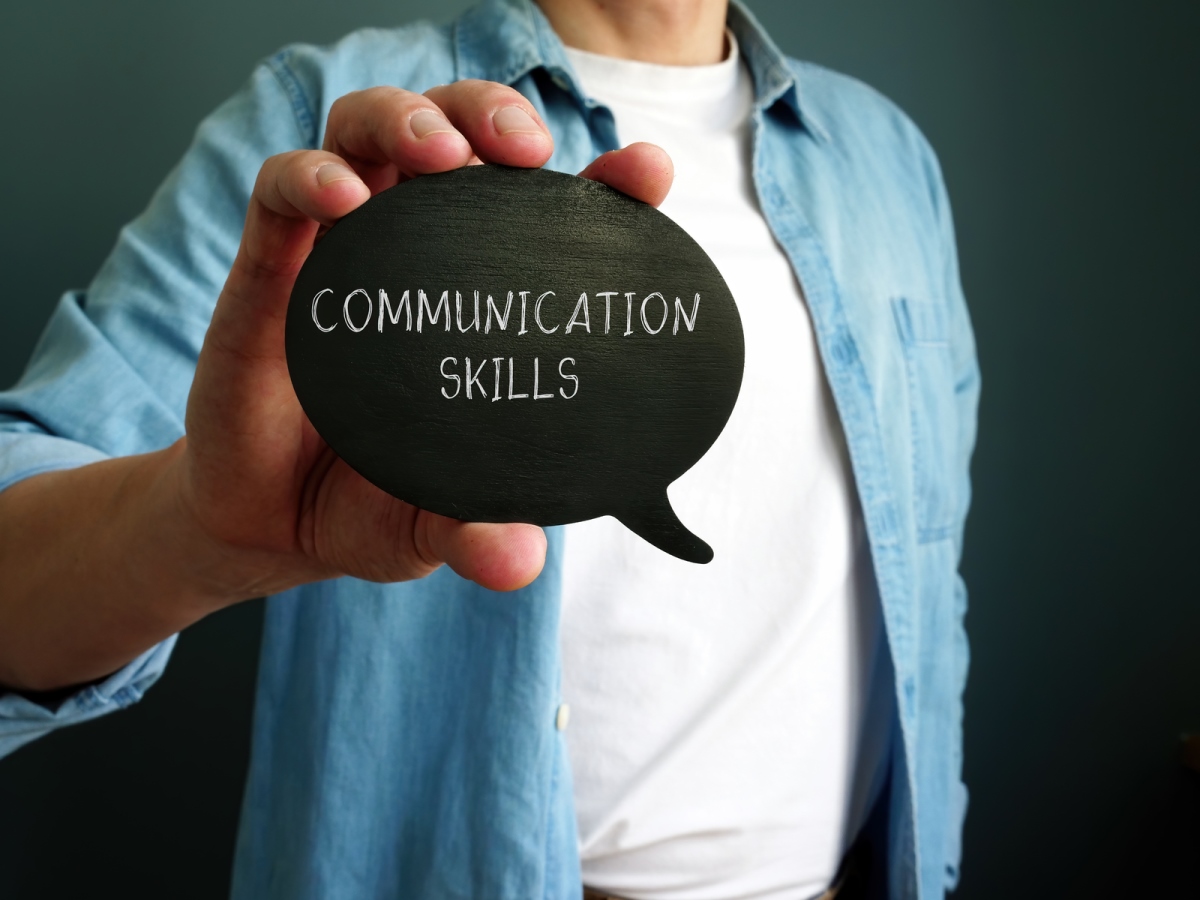Negotiation skills are essential in many fields, from business deals and sales negotiations to conflict resolution and interpersonal communication. To master negotiation, one needs both theoretical understanding and practical experience. One of the most effective ways to develop these skills is through specific training exercises that mimic real-life scenarios. This article presents two of the best training examples for honing negotiation skills: Role-Playing Negotiation Scenarios and Case Study-Based Negotiation Exercises.
Why Negotiation Training Matters
Before diving into the examples, it’s important to understand why negotiation training is essential. In any negotiation, the goal is not merely to win but to create a win-win situation where both parties walk away satisfied. Training provides participants with opportunities to practice active listening, assertiveness, empathy, and flexibility—all crucial qualities for effective negotiators. Well-designed negotiation training also allows individuals to explore different strategies and tactics, analyze outcomes, and learn from their mistakes.
Negotiation Skill Training 1: Role-Playing Negotiation Scenarios
Role-playing exercises are one of the most effective and commonly used methods in negotiation training. These exercises provide a safe environment where participants can test negotiation strategies, explore different perspectives, and practice conflict resolution in a controlled setting.
Setup for the Role-Playing Exercise
In this example, participants are divided into two groups, each representing different stakeholders in a negotiation. A common scenario might be a negotiation between a supplier and a buyer discussing the terms of a long-term contract. Each participant is provided with background information about their role, including objectives, constraints, and potential compromises they might consider. The two groups are given time to strategize before the actual negotiation begins.
For instance, the supplier’s group might focus on maximizing profit, maintaining flexibility in supply timelines, and establishing a strong, long-term partnership. On the other hand, the buyer’s group may prioritize securing the best possible price, ensuring timely delivery, and locking in favorable terms for future business. Both sides are aware that compromises will need to be made, but their goal is to achieve the most favorable outcome for their respective interests.
Execution of the Role-Playing Scenario
The negotiation process begins with both sides presenting their initial offers. Here, participants get the opportunity to practice several key negotiation skills, such as:
- Active listening: Negotiators must carefully listen to the opposing side’s concerns and priorities, rather than immediately jumping to counter-arguments. This skill helps them understand the underlying motivations behind each party’s positions.
- Framing and reframing: Throughout the exercise, participants learn how to present information in a way that emphasizes their interests while still remaining open to compromises. For example, the supplier could frame a slightly higher price as a necessity for guaranteeing high-quality goods and timely delivery.
- Handling objections: One of the most critical aspects of negotiation is dealing with objections in a way that does not escalate conflict. During the exercise, participants will likely face pushback on their offers. Learning how to acknowledge concerns and counter them with logical, data-backed responses is crucial.
Debrief and Learning
After the negotiation ends, participants regroup for a debriefing session, where the facilitator leads a discussion on what strategies worked well, where improvements could be made, and what lessons were learned. Role-playing exercises offer valuable insights into the dynamics of negotiation, including how emotions can influence decision-making, how to recognize hidden interests, and how to stay patient under pressure.
In this example, participants can also analyze the power dynamics in the negotiation. For instance, did one party hold more leverage, and how did that affect the outcome? Understanding the balance of power is essential for effective negotiation, and role-playing allows participants to see this balance in action.
Key Takeaways from the Role-Playing Example:
- Practice in a controlled environment: Role-playing gives negotiators the chance to test their skills without real-world consequences.
- Empathy and perspective-taking: By stepping into the shoes of another stakeholder, participants can gain a deeper understanding of the other side’s motivations.
- Real-time feedback: The debrief session allows participants to receive feedback on their performance, helping them identify strengths and areas for improvement.
- Enhanced communication skills: Negotiators learn to frame their points persuasively and respond to objections in a constructive manner.
Negotiation Skill Training 2: Case Study-Based Negotiation Exercises
Case study-based training offers another powerful approach to developing negotiation skills. This method involves analyzing real or hypothetical business cases where negotiation plays a pivotal role. Participants are asked to evaluate the situation, develop a negotiation strategy, and determine the best course of action.
Setup for the Case Study Exercise
In this example, the facilitator presents a detailed case study involving a multinational corporation looking to acquire a smaller, tech-savvy startup. Both companies have different interests, but they also stand to benefit from a partnership. The multinational corporation wants access to the startup’s innovative technology, while the startup seeks resources and market expansion opportunities.
Participants are divided into two groups representing the interests of each company. They are tasked with developing a negotiation strategy based on the case study. The groups must decide which aspects of the deal they are willing to compromise on and which points are non-negotiable.
Execution of the Case Study Exercise
Once the participants have reviewed the case study and developed their strategies, the negotiation process begins. Unlike role-playing, where participants may be improvising based on character backgrounds, the case study format is more analytical, focusing on data-driven decisions and real-world scenarios.
The negotiation focuses on several key issues:
- Valuation of the startup: The two sides must agree on a fair price. The startup’s team will argue for a higher valuation based on their technology’s market potential, while the corporation will try to justify a lower offer due to financial risks and integration costs.
- Equity vs. Cash Payment: The startup might prefer equity in the larger corporation to retain some level of control and benefit from future growth, while the corporation might prefer a cash payment to avoid diluting its ownership.
- Post-Acquisition Control: The startup’s founders will likely want some level of autonomy post-acquisition to ensure their innovation continues to thrive, while the corporation might prefer to integrate the startup fully into its operations.
Throughout this negotiation, participants must rely on negotiation techniques like anchoring (setting an initial offer to influence the negotiation range) and BATNA analysis (Best Alternative to a Negotiated Agreement), ensuring they have a clear understanding of their options if the deal falls through.
Debrief and Learning
After the case study negotiation, the facilitator leads a debrief session where both sides can reflect on their approach and the final outcome. Participants discuss what strategies were most effective, such as identifying the other side’s priorities early on or adjusting the initial offer based on new information that came to light during the negotiation.
Case studies offer valuable insights into complex, high-stakes negotiations where financial analysis, strategic thinking, and creative problem-solving are essential. They help participants understand how to balance competing interests while keeping an eye on long-term goals.
Key Takeaways from the Case Study Example:
- Real-world application: Case studies allow participants to tackle real-world negotiation challenges and develop strategies based on actual business scenarios.
- Focus on strategy: Participants must analyze data, assess risks, and develop thoughtful approaches to the negotiation rather than improvising.
- Learning from outcomes: The debrief session gives participants a chance to review their decisions and understand the consequences of their choices, helping them apply these lessons to future negotiations.
- In-depth problem solving: Complex case studies force negotiators to think critically and explore creative solutions to maximize value for both parties.
Negotiation Skill Training 3: The Silent Negotiation Exercise
The Silent Negotiation exercise is designed to sharpen non-verbal communication skills and teach negotiators how to read body language, expressions, and other subtle cues that can influence the outcome of a negotiation. This exercise emphasizes the importance of observing and interpreting non-verbal signals while minimizing verbal communication.
Setup for the Silent Negotiation Exercise
Participants are divided into pairs, with one person assigned the role of a seller and the other as a buyer. The scenario might involve the sale of a valuable asset, such as a piece of real estate, a piece of artwork, or even a high-priced product. Each participant is given specific instructions about their objectives, such as the highest or lowest price they can offer, their alternatives, and potential compromises they can consider. However, the twist in this exercise is that no one is allowed to speak.
Instead of relying on words, participants must negotiate the terms of the sale using only body language, facial expressions, gestures, and written notes. For example, they can communicate their approval by nodding, show hesitation with a raised eyebrow, or express dissatisfaction with a frown.
Execution of the Silent Negotiation
During the negotiation, participants use non-verbal communication to convey their position and reactions. For instance, if the seller writes down a high asking price, the buyer may respond with a written counteroffer while expressing concern through body language, such as furrowing their brow or shrugging their shoulders.
This exercise pushes participants to focus on their partner’s body language and facial cues. It also encourages negotiators to think carefully about their own non-verbal signals, ensuring they are sending the right message without saying a word.
Debrief and Learning
After the negotiation ends, participants engage in a debrief session where they discuss their experiences. They reflect on how effective their non-verbal communication was, whether they correctly interpreted their partner’s signals, and how they adapted their negotiation strategy when verbal communication was not an option.
Facilitators can provide insights on how non-verbal cues can sometimes betray true feelings, highlighting the importance of aligning body language with verbal communication in real-world negotiations. Additionally, participants discuss how they felt during the silent negotiation and whether it was easier or more challenging compared to traditional negotiation techniques.
Key Takeaways from the Silent Negotiation Example:
- Non-verbal communication awareness: This exercise enhances participants’ ability to read and interpret body language, a critical aspect of negotiation often overlooked in verbal exchanges.
- Self-control: Negotiators learn to control their own body language and facial expressions to avoid giving away too much information.
- Adaptation: Participants practice adapting their strategy based on non-verbal feedback, helping them to stay flexible in negotiations where direct communication may be limited.
Negotiation Skill Training 4: Multi-Party Negotiation Simulation
Multi-party negotiation exercises involve more than two parties, each with their own interests, making the negotiation process more complex. This type of exercise is ideal for training individuals to manage multiple stakeholders and balance competing priorities in scenarios such as contract negotiations, international trade deals, or political agreements.
Setup for the Multi-Party Negotiation Simulation
In this example, participants are divided into several groups representing different stakeholders in a complex business negotiation. The scenario might involve a consortium of companies negotiating the terms of a joint venture, where each company has its own set of interests, goals, and constraints.
For instance, the negotiation could revolve around a multinational construction project where a government agency, a private contractor, a local community group, and an environmental organization all have a stake in the outcome. Each group is given specific objectives—such as securing funding, maintaining environmental standards, ensuring community involvement, or maximizing profits—and participants must navigate the needs of all parties to reach a final agreement.
Execution of the Multi-Party Negotiation
The negotiation process begins with each group presenting their initial position. As the exercise progresses, participants must work through the complexities of managing multiple interests. Unlike one-on-one negotiations, multi-party negotiations require negotiators to build coalitions, seek compromises, and manage conflicts that arise between different groups.
Participants need to practice several key skills:
- Coalition building: Often, the most effective way to gain leverage in a multi-party negotiation is by forming alliances with other stakeholders who share similar goals.
- Conflict resolution: With so many competing interests, conflicts are inevitable. Negotiators must be adept at mediating disputes and finding middle ground that satisfies multiple parties.
- Consensus building: The ultimate goal is to reach an agreement that all parties can accept. Negotiators must use diplomacy, persuasion, and compromise to find a solution that addresses the core concerns of each group.
Debrief and Learning
After the multi-party negotiation concludes, participants engage in a debriefing session to discuss what strategies worked well and where they encountered difficulties. This session provides an opportunity to reflect on how well participants balanced competing interests, whether they managed to build coalitions effectively, and how they navigated conflicts during the process.
The facilitator may also highlight the importance of maintaining transparency and trust in multi-party negotiations. With so many stakeholders involved, information can sometimes be misinterpreted or manipulated, making it crucial for negotiators to maintain open and honest communication.
Key Takeaways from the Multi-Party Negotiation Example:
- Managing complexity: Multi-party negotiations require participants to juggle multiple interests and objectives, making the negotiation process more dynamic and challenging.
- Coalition building: Negotiators learn how to form alliances with other stakeholders to strengthen their position and create a more favorable outcome.
- Conflict resolution and diplomacy: This exercise teaches participants how to mediate disputes and find compromises that satisfy all parties involved.
- Consensus building: In complex negotiations, reaching a final agreement requires patience, diplomacy, and a willingness to find creative solutions to seemingly intractable problems.
Negotiation Skill Training 5: The “Ultimatum Game” Exercise
The “Ultimatum Game” is a classic exercise used in negotiation training to highlight concepts like fairness, decision-making, and the impact of emotions in negotiations. This exercise illustrates how people make decisions when faced with unfair offers and how emotional responses can affect outcomes, even when it is not necessarily rational.
Setup for the Ultimatum Game
The group is divided into pairs, with one participant playing the role of the “proposer” and the other the “responder.” The proposer is given a sum of money (usually fictional in training exercises) and must offer a portion of it to the responder. However, the catch is that the responder can either accept or reject the offer. If the responder accepts, the money is split according to the proposer’s offer. If the responder rejects, neither participant gets any money.
For instance, the proposer is given $100 and must decide how much to offer to the responder. The responder can either accept or reject the offer. If the responder rejects it, both walk away with nothing.
Execution of the Ultimatum Game
The proposer makes an offer, and the responder must decide whether to accept or reject. The goal is for the proposer to offer enough to incentivize the responder to accept, while the responder must decide whether the offer is “fair” or “unfair.”
This exercise highlights the role of fairness in negotiations and how emotional responses can lead to decisions that go against pure self-interest. Responders may reject offers they deem unfair, even if accepting them would be more beneficial than walking away with nothing. The proposer’s role is to consider not just the offer’s financial value but the responder’s perception of fairness.
Debrief and Learning
After the negotiation, the facilitator leads a discussion on the results. Participants reflect on how fairness influenced their decisions and the emotional aspects of negotiation. The debrief emphasizes that in real-world negotiations, parties are not always driven by logic and maximizing financial gains. Emotional factors, perceptions of fairness, and even long-term relationships can play a more significant role.
Key Takeaways from the Ultimatum Game Example:
- Fairness and emotions: The exercise teaches negotiators that fairness and emotions can significantly influence the outcome, even when logic suggests a different course of action.
- Understanding counterparts’ perspectives: The proposer learns that offering a fair share increases the chances of a successful negotiation, while the responder learns the importance of staying rational.
- Win-win vs. zero-sum: This exercise shows that unfair behavior can lead to a lose-lose situation, and fairness often results in more favorable outcomes for both parties.
Negotiation Skill Training 6: The “Prisoner’s Dilemma” Negotiation
The “Prisoner’s Dilemma” is another classic exercise used in negotiation training to highlight the challenges of trust and cooperation. This exercise teaches negotiators how to balance individual and collective interests while deciding whether to cooperate or act in self-interest.
Setup for the Prisoner’s Dilemma
Participants are divided into pairs, and each person in the pair is a “prisoner.” They are each told that they can either “cooperate” or “defect” in the negotiation. The outcome for each person depends on the choices made by both prisoners, with the highest reward going to those who defect while the other cooperates. However, if both defect, the punishment is high, and if both cooperate, they receive a moderate but fair reward.
For example:
- Both cooperate: Each prisoner gets a moderate benefit (e.g., 3 points).
- One defects, one cooperates: The defector receives a higher benefit (e.g., 5 points), and the cooperator receives a penalty (e.g., 0 points).
- Both defect: Both receive the lowest possible outcome (e.g., 1 point each).
Execution of the Prisoner’s Dilemma
Participants must decide whether to cooperate or defect without knowing what the other person will choose. The decision is made independently, and participants cannot communicate with each other. This tests their ability to trust the other party or act in self-interest.
The facilitator may also run multiple rounds of this exercise, where participants can see patterns of cooperation or defection, and the dynamics evolve over time. The more rounds that are played, the more strategic participants become, balancing short-term gains with long-term cooperation.
Debrief and Learning
After the negotiation, participants discuss their choices and the results. The debrief focuses on the role of trust in negotiations and how short-term decisions can impact long-term relationships. This exercise teaches participants about the importance of building trust and how cooperation often leads to better overall outcomes than acting purely in self-interest.
The facilitator may also guide participants through a discussion of real-world applications, such as business partnerships, trade negotiations, or team dynamics, where cooperation and trust play critical roles in achieving win-win outcomes.
Key Takeaways from the Prisoner’s Dilemma Example:
- Trust-building: This exercise teaches the importance of building trust in negotiations and demonstrates that short-term selfish gains can undermine long-term success.
- Cooperation vs. competition: Participants learn that in many negotiations, cooperation leads to better outcomes than competition.
- Strategic thinking: The Prisoner’s Dilemma requires participants to think strategically about their choices and how the other party’s behavior might evolve over time.
Final Thoughts
Both role-playing scenarios and case study-based exercises are excellent methods for improving negotiation skills. Role-playing allows participants to experience the emotional dynamics of negotiation and practice active listening and objection handling, while case studies help them develop strategic thinking and problem-solving abilities based on real-world data.
When used in combination, these two training methods provide a well-rounded approach to negotiation skills development, preparing participants for a wide range of challenges. Negotiation is not just about winning but about creating value for all parties, and these training examples give participants the tools they need to succeed in that mission.



















